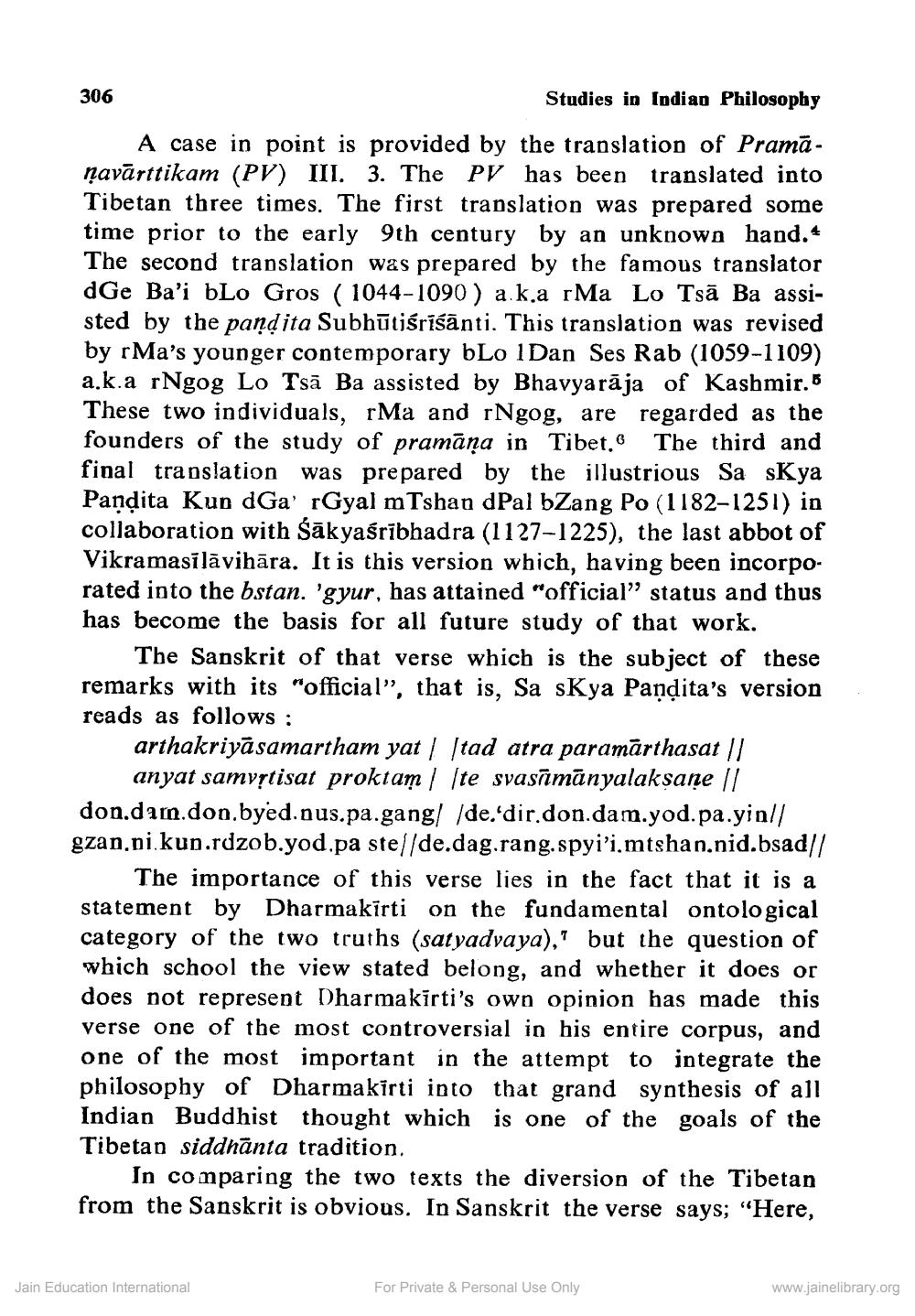________________
306
Studies in Indian Philosophy
A case in point is provided by the translation of Pramaņavārttikam (PV) III. 3. The PV has been translated into Tibetan three times. The first translation was prepared some time prior to the early 9th century by an unknown hand. The second translation was prepared by the famous translator dGe Ba'i bLo Gros ( 1044-1090) a.k.a Ma Lo Tsā Ba assisted by the pandita Subhūtjśrīśānti. This translation was revised by rMa's younger contemporary bLo 1 Dan Ses Rab (1059-1109) a.k.a rNgog Lo Tsā Ba assisted by Bhavyarāja of Kashmir. 6 These two individuals, rMa and rNgog, are regarded as the founders of the study of pramāņa in Tibet. The third and final translation was prepared by the illustrious Sa Kya Pandita Kun dGa' rGyal mTshan dPal bZang Po (1182-1251) in collaboration with Śākyaśrībhadra (1127-1225), the last abbot of Vikramasilāvihāra. It is this version which, having been incorporated into the bstan. 'gyur, has attained "official” status and thus has become the basis for all future study of that work.
The Sanskrit of that verse which is the subject of these remarks with its "official”, that is, Sa skya Pandita's version reads as follows:
arthakriyāsamartham yat/ stad atra paramarthasat ||
anyat samvştisat proktam ste svasāmānyalaksane // dondur.don.byed. nus.pa.gang/ /de.'dir.don.dam.yod.pa.yin// gzan.ni kun.rdzob.yod.pa stes/de.dag.rang. spyi'i, mtshan,nid.bsad//
The importance of this verse lies in the fact that it is a statement by Dharmakirti on the fundamental ontological category of the two truths (satyadvaya)," but the question of which school the view stated belong, and whether it does or does not represent Dharmakirti's own opinion has made this verse one of the most controversial in his entire corpus, and one of the most important in the attempt to integrate the philosophy of Dharmakirti into that grand synthesis of all Indian Buddhist thought which is one of the goals of the Tibetan siddhanta tradition.
In comparing the two texts the diversion of the Tibetan from the Sanskrit is obvious. In Sanskrit the verse says; “Here,
Jain Education International
For Private & Personal Use Only
www.jainelibrary.org




